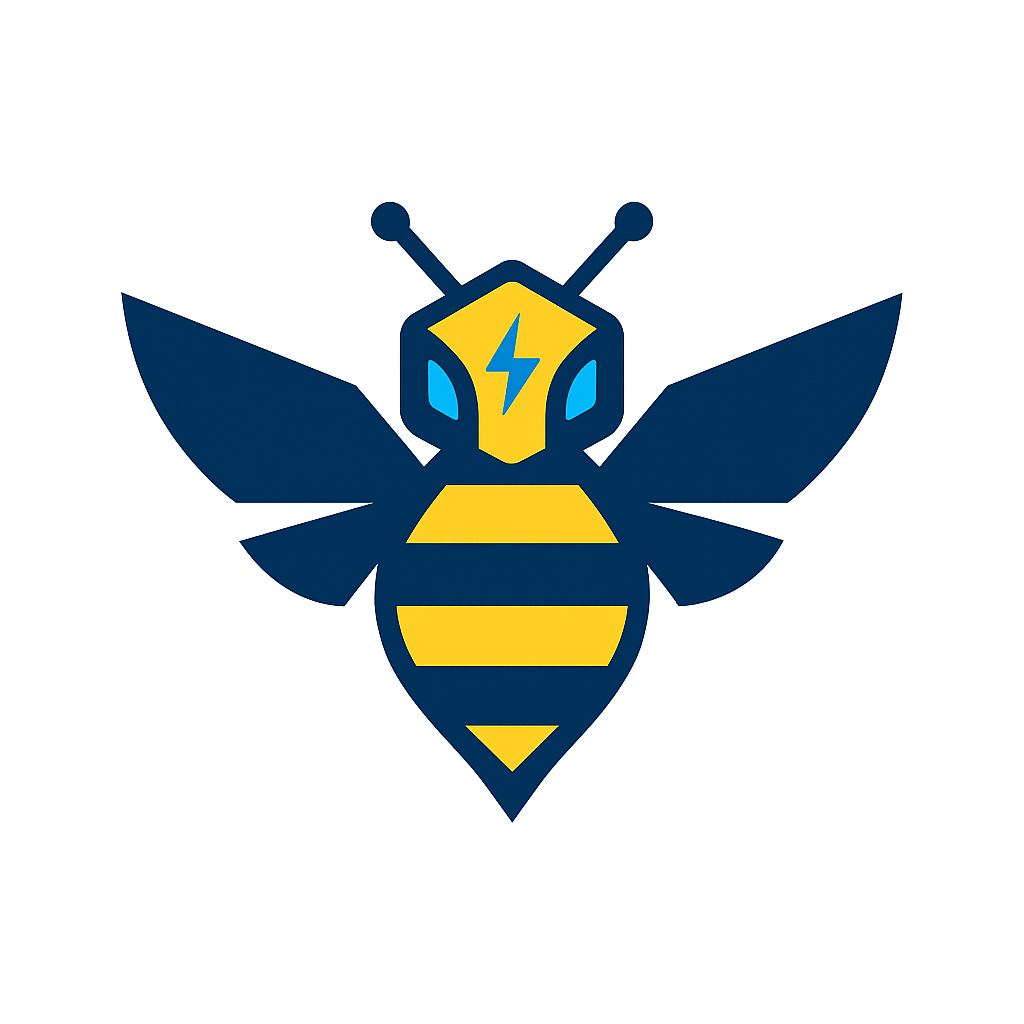Introduction: Reclaim Your Time in 2025
Ever feel like there aren’t enough hours in the day to tackle your to-do list? You’re not alone. In 2025, the pace of life is faster than ever, but here’s the good news: time management AI tools 2025 are here to help you take control. Imagine turning chaos into clarity, effortlessly prioritizing tasks, and carving out time for what truly matters—whether it’s a passion project or a quiet evening with loved ones. At Sparkbee, we’re all about sparking inspiration, and this article is your guide to mastering AI for time management to boost your productivity and peace of mind.
With AI advancements reshaping workplaces and personal routines, time management AI tools 2025 are smarter and more intuitive than ever. From automating schedules to offering personalized insights, these tools are your allies in the quest for effective scheduling strategies. Let’s explore how you can harness AI productivity tools to transform your days, with practical tips, real-world examples, and a sprinkle of motivation to fuel your journey.
Visual Suggestion: Include a vibrant infographic here showcasing the top AI tools with icons (e.g., a calendar for Notion, a checklist for Todoist).
1. Why AI Is Your Time Management Superpower in 2025
The workplace of 2025 thrives on efficiency, and time management AI tools 2025 are at the forefront. These tools don’t just organize tasks—they analyze your habits, predict needs, and automate repetitive work. According to a 2025 Slack Workforce Lab study, 80% of professionals using AI tools report improved productivity and reduced stress. Whether you’re a freelancer juggling clients or a parent balancing work and home, AI can help you work smarter, not harder.
Why It Matters: AI tools like Notion AI and ClickUp Brain adapt to your unique schedule, offering tailored recommendations. They free up mental space, letting you focus on high-impact tasks and personal growth.
First Step: Reflect on your current time management habits. Where do you lose time? Manual scheduling? Procrastination? Identifying pain points will guide you to the right AI productivity tools.
Rhetorical Question: How much time could you save by letting AI handle the busywork?
2. Notion AI: Your All-in-One Productivity Hub
Notion AI is a powerhouse for AI for time management, combining note-taking, task management, and scheduling in one customizable platform. Its 2025 updates include smarter calendar integrations and AI-driven task prioritization, making it ideal for effective scheduling strategies.
Key Features:
- AI Templates: Create structured workspaces for daily planning or project timelines.
- Calendar Sync: Color-code tasks and deadlines, syncing with Google Calendar or Outlook.
- Task Prioritization: Notion AI analyzes deadlines and suggests what to tackle first.
How to Use:
- Set up a weekly planner in Notion with sections for work, personal goals, and habits.
- Use the AI to generate a prioritized to-do list based on your deadlines.
- Integrate with Slack to track team tasks without switching apps.
Real-World Example: Emma, a content creator, used Notion AI to organize her editorial calendar. By syncing deadlines and automating reminders, she cut planning time by 30% and published content consistently.
Practical Exercise: Download Notion’s free version and create a daily task board. Test it for a week, noting how it streamlines your workflow.
Visual Suggestion: Insert a screenshot of a Notion task board with color-coded tasks to inspire readers.
3. Todoist with Smart Schedule: Prioritize Like a Pro
Todoist’s AI-powered Smart Schedule is a game-changer for time management AI tools 2025. It learns your work habits and suggests optimal times for tasks, ensuring you stay on track without feeling overwhelmed.
Key Features:
- Smart Scheduling: AI assigns tasks to your calendar based on priority and availability.
- Habit Tracking: Monitor recurring tasks, like exercise or weekly reports.
- Natural Language Input: Type “Call client tomorrow at 3 PM” and Todoist schedules it.
How to Use:
- Input tasks with deadlines and let Smart Schedule arrange them.
- Review your daily plan each morning to adjust priorities.
- Use Todoist’s free version to start; upgrade for advanced analytics.
Real-World Example: Raj, a project manager, used Todoist to juggle 20+ weekly tasks. Smart Schedule helped him allocate time for deep work, reducing missed deadlines by 50%.
Reflection Prompt: Identify one recurring task (e.g., email sorting) that Todoist could automate. Set it up and track the time saved.
4. ClickUp Brain: Automate and Optimize Your Workflow
ClickUp Brain, an AI assistant within the ClickUp platform, is a standout for boost productivity tips in 2025. It connects tasks, documents, and schedules, offering real-time insights to streamline effective scheduling strategies.
Key Features:
- Task Recommendations: Suggests tasks based on your schedule and context (e.g., “Prep for meeting” at work).
- Time Tracking: Logs time spent on tasks, highlighting inefficiencies.
- Gantt Charts: Visualize project timelines for better planning.
How to Use:
- Use ClickUp’s Time Management Schedule Template to plan tasks with deadlines.
- Enable the global timer to track time across devices.
- Review AI-generated reports to optimize your work habits.
Real-World Example: Lisa, a small business owner, used ClickUp Brain to automate client follow-ups. By scheduling tasks during her peak productivity hours, she increased sales by 15%.
5. Motion: Your AI-Powered Personal Assistant
Motion takes time management AI tools 2025 to the next level by acting as a virtual assistant. Its AI schedules tasks and meetings based on your priorities, deadlines, and availability, making it perfect for busy professionals.
Key Features:
- Auto-Scheduling: Organizes tasks into your calendar, adapting to changes.
- Focus Time Blocks: Reserves uninterrupted periods for deep work.
- Team Sync: Coordinates schedules across team calendars.
How to Use:
- Input tasks and deadlines, letting Motion create a daily schedule.
- Set preferences for focus time (e.g., 9-11 AM) to protect productivity.
- Try Motion’s 7-day free trial to test its scheduling engine.
Real-World Example: Alex, a software developer, used Motion to balance coding and meetings. By protecting focus time, he completed a project 10 days early, earning a bonus.
6. Practical Tips to Maximize AI Tools
To fully harness AI for time management, combine tools with smart strategies. Here are boost productivity tips to amplify your success:
- Time Block with AI: Use Clockwise or Reclaim.ai to schedule focus blocks, reducing distractions. Time blocking can boost productivity by up to 80%.
- Review Insights: Check AI-generated reports (e.g., ClickUp’s analytics) weekly to identify time-wasting habits.
- Start Small: Test one tool at a time to avoid overwhelm. Begin with Todoist’s free plan for simplicity.
- Balance Tech and Human Touch: AI streamlines tasks, but set boundaries to protect personal time and avoid burnout.
Rhetorical Question: What could you achieve with an extra hour each day?
Visual Suggestion: Include a productivity chart showing time saved with AI tools (e.g., manual vs. AI scheduling) to motivate readers.
Conclusion: Spark Your Productivity in 2025
Mastering time management AI tools 2025 is about more than checking tasks off a list—it’s about creating space for growth, creativity, and joy. Tools like Notion AI, Todoist, ClickUp Brain, and Motion empower you to reclaim your time, turning overwhelm into opportunity. By embracing AI productivity tools and effective scheduling strategies, you’re not just managing time—you’re shaping a life that aligns with your dreams.
Take the first step today: choose one tool to try this week, whether it’s Notion’s task board or Motion’s auto-scheduler. At Sparkbee, we’re cheering you on as you spark your productivity journey. Share your boost productivity tips with our community and inspire others! Ready to transform your days? Explore more AI for time management insights in our Skills category at [Sparkbee Skills Link]!







